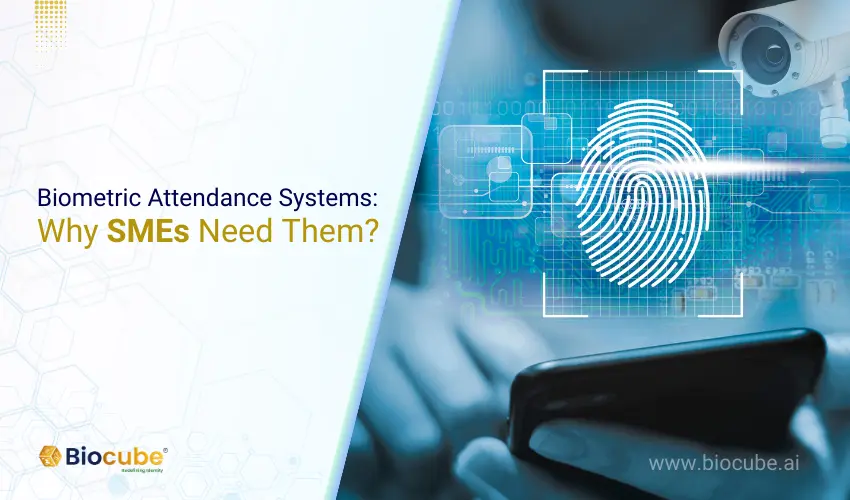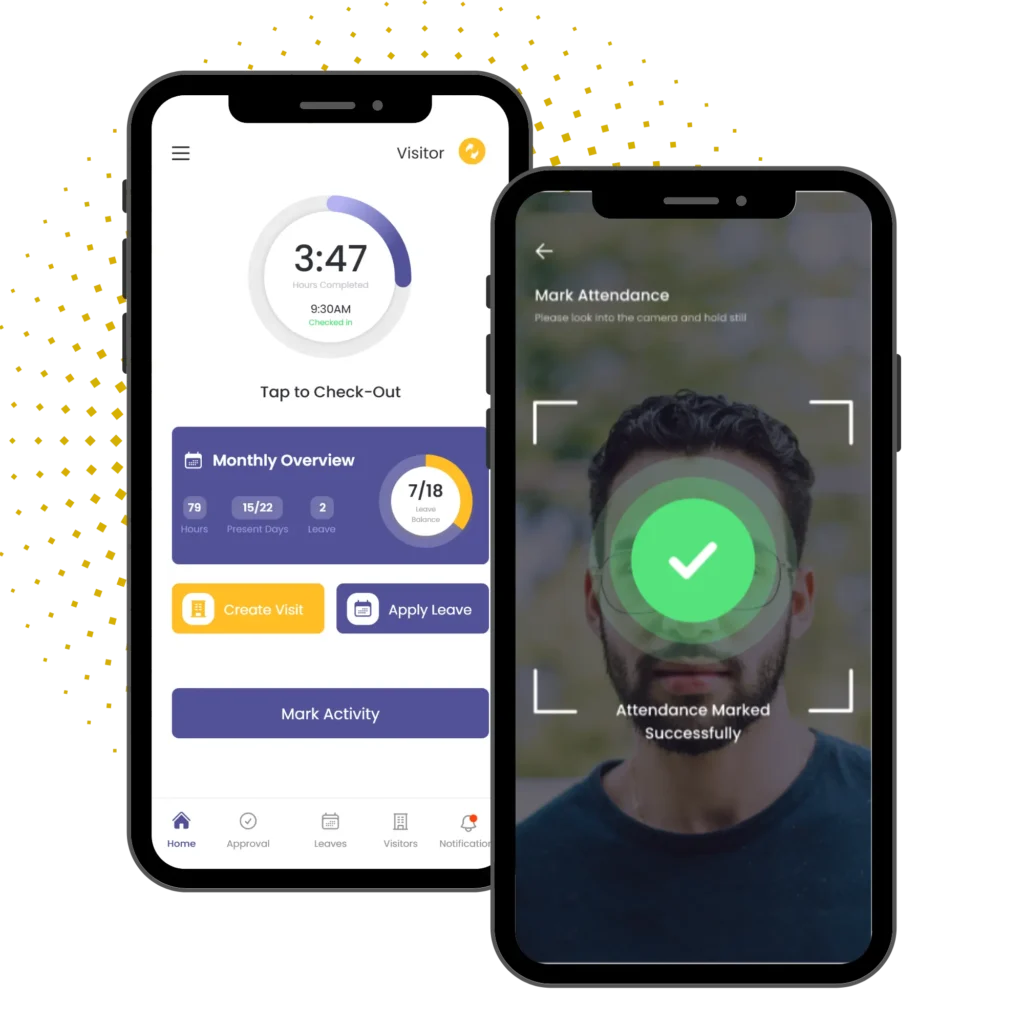
Biometric Attendance Systems for SMEs: According to the Department of Scientific and Industrial Research (DSIR), Indian SMEs contribute 40% of industrial production and exports. Their production value is estimated at Rs 816,000 crore. Therefore, SMEs’ failure drastically impacts the nation.
Unfortunately, according to an article published in Forbes, 90% of startups fail in the first year due to a lack of innovation. However, we also found out that the cause of this failure in the US is also because of their operation practices.
Biometric attendance systems have become necessary for SMEs because they can enhance operational efficiency and even prevent unnecessary cash flow associated with attendance.
What is a Biometric Attendance System?
A contactless attendance system using biometrics uses an individual’s behavioral or physiological characteristics to verify and mark check-in and check-out of the enterprise. Earlier, specialized biometric hardware was used to manage attendance and access in an organization.
Nowadays, contactless biometric solutions that function via CCTV, IP, tablet, laptop, desktop, or smartphone cameras cater to such needs. They have eliminated the need for specialized biometric hardware and even enabled the management of remote workers’ attendance.

4 Reasons That Make Biometric Attendance Necessary for SMEs
Many Small and Medium Enterprises (SMEs) don’t realize the potential of a biometric attendance management system, especially during the early stages, as they are engrossed in growing the business. This lack of attention can significantly hamper operational efficiency and lead to unnecessary losses. Moreover, the loss is often understood at a point when reversing the damage becomes impossible.
The reasons for installing an automated biometric attendance system go beyond record keeping and are as follows:
Reduction in Time Theft
As Small and Medium Enterprises owners, it is essential to know that the employees are present on the premises and not forging their attendance. Time theft is a common occurrence across organizations of all sizes. It is a practice wherein the employee isn’t present in the office but manages to showcase presence at the premises.
Such instances happen when employees give out their physical access cards, like RFIDs or badges, to their coworkers and ask them to mark their check-in. At this point, the company is not only accounting for working hours but also could face delivering work on time as the worker is absent on the premises.
SMEs lose a large chunk of their operational costs due to time theft; however, a face recognition attendance system with built-in liveness detection can help resolve this problem. Essentially, it would mark the check-in and checkout only if the employee is present on the premises. As a result, the organization can expect a drastic reduction in time theft.
Accuracy in Tracking Working Hours
One of the key benefits of installing a biometric attendance tracking system is that it can ensure employee accountability. However, this lead also leads to the secondary advantage of calculating the correct working hours of the workers and making appropriate billings.
Tracking employee time and attendance, especially through a CCTV-based face identification system, makes it more convenient for managers, administrators, and the finance team to account for overtime hours and calculations.
Since such a system is tamperproof, spoof-proof, and contactless, the burden of managing time in the office doesn’t fall on anyone but the employee. Such a system can even detect workers who frequently leave early or late. Simultaneously, it can curate information about the average employee’s working hours in the office.
Must Read: Why Organizations Should Use Contactless Attendance System?
Reduce Attendance Regularization Requests
The IT helpdesk is often overwhelmed with helpdesk requests ranging from system problems to attendance regularizations. The HR department also manages employee attendance, usually raising full and final regularization tickets for administrators in most organizations.
Moreover, some employees receive favoritism from their managers, and often, such requests are approved and sent to the HR and admin departments on a daily, weekly, or monthly basis. The total request range depends on the total number of employees.
The use of a contactless biometric attendance system can significantly reduce the number of regularization tickets and decrease the burden of multiple departments. It can also bring transparency into the organization and avoid favoritism.

Enhance Audit Reports and Ensure Compliance
Organizations provide specific leave balances and off hours to employees. Simultaneously, they specify the working hours and allot time slots to them. However, some employees often arrive late, and others leave early, diminishing the organization’s productivity. Moreover, it also hampers the coworkers’ morale, as the manager or colleagues could delegate the pending work to them, directly increasing their overall working hours and stress.
Besides this, employees working overtime could have low focus and severe health problems.
The inclusion of a face identification attendance solution that integrates with surveillance or tablet cameras significantly changes this situation. It requires logging in and out of the solution and reports the accurate working hours, which are looked at during the audit.
Furthermore, it would ensure that the employees comply with the organization’s work policy and again help curate accurate payroll for employees, which is also shown during the audit checks.
Conclusion
SMEs need biometric attendance systems now more than ever because of many reasons. But primarily, they are required to ensure that the employees are present on the premises whenever they check-in. By doing so, the organization’s productivity remains stable, and the workload never shifts to another employee, which also reduces the attrition rate.
Moreover, using biometric identity for attendance management is a safer approach than others. It is completely tamperproof and spoof-proof because it is unique to an individual. Additionally, the solution can reduce the need for regularly raising attendance regularization requests, which burdens the IT and HR departments.
Besides this, biometric attendance also ensures that employees follow workplace policies, don’t indulge in time theft or proxy attendance, and are accurately paid for their working hours without human intervention.
Get in touch with us to learn how BioQube’s contactless biometric identity can upscale your organization’s attendance and access management.
